E-Postcard
from Our London and Egyptian Safari
6/2 to 6/26/2004
Hello All --
Since you were on our mailing list for our British e-post cards from two years ago, you are by default also on the list for our latest tale of adventure.
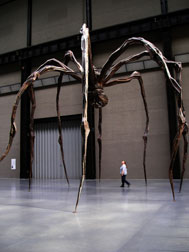 As many of you know, we joined with our friend Vilene and her 12-year old son Matt to take a three-week tour of Egypt. This was the first trip to Egypt for Tim, Diane, and Matt (Vilene had been before). It was also Tim’s and Di’s first real guided pre-packaged trip. Here are the high (and low) lights.
As many of you know, we joined with our friend Vilene and her 12-year old son Matt to take a three-week tour of Egypt. This was the first trip to Egypt for Tim, Diane, and Matt (Vilene had been before). It was also Tim’s and Di’s first real guided pre-packaged trip. Here are the high (and low) lights.
PHASE 0 – London: Before meeting Vilene and Matt in Cairo, we did a quick 3-day jaunt to London, taking advantage of a fly-and-stay special. Quick may be an exaggeration as we spent 6 hours on the tarmac in the plane (engine trouble) before our 5½-hour flight. We stayed in the second-runner-up for the smallest hotel room in Britain, but it was incredibly close to Piccadilly Circus and the Tube. Activities included a day in Hampton Court, viewing the new Harry Potter movie (before the U.S. release), checking the latest exhibits at the Tate Museum of Modern Art and National Gallery, and walking the Thames. It was like seeing an old friend again.
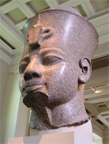
Our primary goal was to revisit the Egyptian area of the British Museum.
Since Victorian times, British (and other) explorers have discovered and absconded with ancient artifacts of Egypt. From part of Pharaoh Ramses II’s beard to the Rosetta Stone, the collection represents some of the best Egypt used to have. It would be interesting to check out their original locations later.
PHASE 1 - CAIRO: Our 11:30 p.m. arrival at Cairo airport was met by the first of many personnel from A to Z Tours, our travel company. He helped us through customs and passed us off to our driver and personal police protection officer, our take-us-to-the-hotel person, and our future guide, Mohamad.
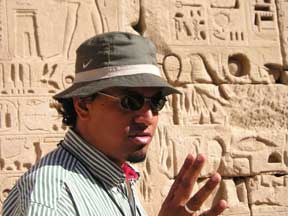 After many trips where we did this stuff ourselves, it was an unexpected pleasure not to have to deal with the bureaucracy, especially when we could not read the Arabic-language signs. And since one of the guys handed Di a dozen roses in welcome, she would have followed them anywhere. However, as we were soon to find out, help has its costs…but more on that later.
After many trips where we did this stuff ourselves, it was an unexpected pleasure not to have to deal with the bureaucracy, especially when we could not read the Arabic-language signs. And since one of the guys handed Di a dozen roses in welcome, she would have followed them anywhere. However, as we were soon to find out, help has its costs…but more on that later.
The next morning we hooked up with Vilene and Matt, together meeting our long-term guide, Mohamad. He is a 27-year old Egyptian with a university degree in guidance (that is, guiding tourists), a wonderful command of the English language, a wealth of knowledge about Egyptian history and hieroglyphics, great sense of humor, and endless patience for dumb tourist questions (as in dumb tourists and dumb questions).
Dressed for the weather in long sleeves and/or sunscreen, sunglasses, hats, long pants, and hiking boots while carrying our cameras, film, batteries, bug spray, extra sunscreen, flashlights, water, eye drops, Arabic phrase books, and first aid kits, we looked the perfect picture of, um, American tourists.
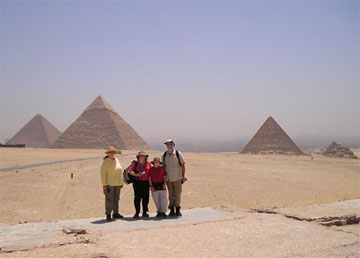 We were prepared for the incredibly hot, dry, dusty and crowded grand tour of the Great Pyramids (see attached image), as we had read in the travel guides.
We were prepared for the incredibly hot, dry, dusty and crowded grand tour of the Great Pyramids (see attached image), as we had read in the travel guides.
Hot, dry and dusty it was, but we were traveling at the beginning of the off-season. Due to the heat, most tourists avoid Egypt from June to August. Not us, of course. Although the temperatures ranged from 90 to 113 degrees F, the lack of crowds allowed us to experience some unexpected delights.
Like most people, we remembered first seeing drawings and photos of the Pyramids of Giza and the Sphinx when we were children. Through the years, from Bugs Bunny cartoons to Discovery-Channel specials, the images reappeared. Would we be disappointed when viewing the real thing? Absolutely not! As we approached the Great Pyramid of Khufu (Cheops), we were in awe of its size and fairly good condition. After 4500 years of exposure, it is no wonder the guidebooks say, “Man fears Time, but Time fears the Pyramids.” Since entrance to the pyramid is limited to a few early visitors, and we got a late start, we were thrilled to find out that (due to the season) we could still get inside. Walking up the grand gallery into the King’s Burial chamber was unforgettable. About 2.3 million limestone blocks, fit with precision, surrounded us. Although the mummy is long gone, the sarcophagus was still there.
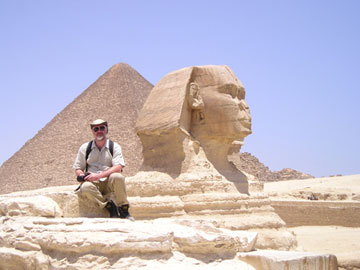 It was obvious that the pyramid was built around it, as it was too large to fit though the chamber door. This was only the first example of the skill of the Pharonic engineers.
It was obvious that the pyramid was built around it, as it was too large to fit though the chamber door. This was only the first example of the skill of the Pharonic engineers.
On to the other two pyramids, a museum containing a reassembled cedar boat buried with the pharaoh to carry him to the netherworld, and pictures with the Sphinx. Mohamad started his story of the origin of the religion, culture, and politics of the pharaohs, to be enhanced as we traveled the country.
After visits to a perfume outlet and a papyrus factory, the day ended with a dinner cruise on the Nile River. It was an evening of authentic (although buffet) Egyptian food, a belly dancer, and a male dancer who whirled around in multilayered costume both impressing us with his stamina and making us dizzy. We went home exhausted… and that was just Day 1.
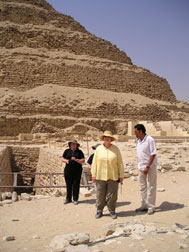
The next day we traveled out to Saqqara, site of the stepped Pyramid of Zoser (Djoser) – the first real pyramid. It looks like a large wedding cake with square layers and was a big step in design from earlier single layered mastaba tombs. Only later were the sides of pyramids actually angled to make the shape we recognize. The sight of the Bent Pyramid at Dahshur brought a smile – the builders started the pyramid at too steep an angle and had to modify it halfway. By sheer luck (and sufficient baksheesh – see below) we were able to enter the Red Pyramid nearby. This involved traveling down a 70-yard narrow spiraled incline, bent over due to the low height, using only our flashlights for illumination. Matt moved about the uneven surface like a mountain goat, while the rest of us were slower. It was spooky, dusty, and not for those with claustrophobia or asthma but since we had the tomb to ourselves, it was a special experience. We now appreciate the conditions under which archeologists work.
CULTURAL NOTE (Baksheesh): As Americans we are used to tipping for restaurant service, taxis, tour guides, porters, and (if we remember) hotel maid service. In Egypt, where salaries for most service people are extremely low, baksheesh (tipping) is expected (and sometimes required) at many levels. The savvy tourist learns to carry a wad of small denomination Egyptian pounds to reward and ward off the ever-increasing number of baksheesh demands. We were constantly trading small bills, since they were always needed and hard to get. Even when buying water or other small items, the shopkeeper would try to give you candy or other items instead of change. Although the tips are not large (usually 50 piastres to 10 EP, that’s $.08 to $1.60), it is the sheer number of supplicants (to put it nicely) that wears one down.
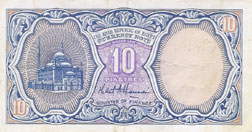
In a typical day you must hand out baksheesh for toilet paper (1 EP – and woe to the tourist who doesn’t have any money with them), the guy who lets you take photos when a “No Photos” sign is posted (5 – 10 EP), the man who tells you what god is painted on the tomb wall when you already know the answer (1 – 5 EP), the security guard you didn’t request, the other guy in the van who accompanied your tour but didn’t do anything, the tomb guard who took your entrance ticket (which you paid for) and opened the door, the man who gets the registration card for your hotel room, etc, ad nauseum. Those of you who have traveled to Mexico or the Caribbean know that most natives expect a tip if you take their picture. Here, they try to step into view when you are taking a picture of something else, so as to be able to demand baksheesh.
I am convinced that some people just set up a baksheesh stand wherever tourists gather and they can get away with it. For example, after paying the demanded 1EP to use a toilet, I turned into the washroom and saw the sign in English “No tipping required – this toilet is free.” The human t.p. dispenser could not read English and I can’t argue in Arabic – it is the audacity of the situation that both amuses and frustrates.
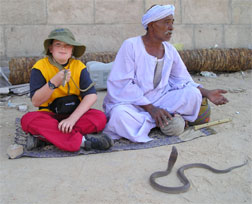
On the other hand, we were happy to give baksheesh to our tour guide and those people like our van driver, who made the trip easier and more valuable. We noticed Mohamad occasionally giving baksheesh to various people at the sites we visited. It is both a measure of generosity and a way to “grease the palm” for future visits. At times the rules of baksheesh confused us. It is, however, the way of life here so you smile, say “shukran” (thank you) and stuff a folded bill into outstretched hand.
PHASE 2 – ASWAN and LUXOR: An overnight tourist train took us from Cairo south about 530 miles to Aswan. In early times, this trip took 6 – 12 weeks by camel. The train traveled though Middle Egypt, an area closed to tourist stops due to regional fundamentalist violence. Security was apparent from the police on board to the armed guards along the track. It was neither the first nor the last time we would be aware of security personnel on this trip.
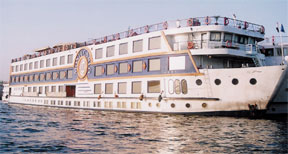
In Aswan, we stowed our luggage aboard a small cruise ship, our “hotel” for the next few days and headed off to see the sights. Aswan is the location of the High Dam, a monumental project to control the yearly flooding of the Nile. The Nile starts at two sources in East Africa and has a length of over 4,000 miles. Each spring, floodwaters would increase the width of the Nile about 12 miles, bringing with it the silt from upstream. This “gift of the Nile”, deposited on nearby fields, assured a rich fertile soil beside the river and guaranteed sufficient crops for the population.
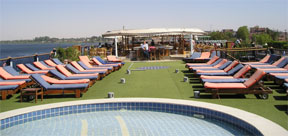 However, since the water level could not be controlled, very high or low flood levels could mean starvation. As early as 2900 B.C., dams were attempted in this area. The latest attempt, built in the 1960’s in an Egyptian-Russian project, allowed the Nile to not only be monitored but also used for electrical power. One disadvantage is that the silt was no longer deposited on the fields, so farmers have to depend on fertilizers, which run off to cause polluted waters and gradual filling in of the Nile Delta on the Mediterranean. (We see a similar problem with the Mississippi River). Another problem is that many monuments and villages were submerged by the huge Lake Nasser formed upstream of the dam. Progress has its costs.
However, since the water level could not be controlled, very high or low flood levels could mean starvation. As early as 2900 B.C., dams were attempted in this area. The latest attempt, built in the 1960’s in an Egyptian-Russian project, allowed the Nile to not only be monitored but also used for electrical power. One disadvantage is that the silt was no longer deposited on the fields, so farmers have to depend on fertilizers, which run off to cause polluted waters and gradual filling in of the Nile Delta on the Mediterranean. (We see a similar problem with the Mississippi River). Another problem is that many monuments and villages were submerged by the huge Lake Nasser formed upstream of the dam. Progress has its costs.
From Aswan we took a short plane ride to Abu Simbal, a massive monument that was moved to save it from submersion.
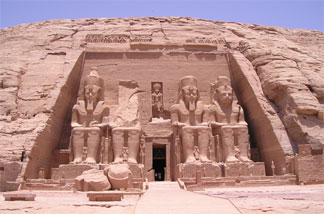 It is a huge temple built into a mountainside with large statues of Ramses II at the front. To save this temple, it was cut into over 2,000 blocks, each weighing 22 tons, and reassembled about 650 feet inland. Not only is the sectioning virtually impossible to see, a “mountain” was build around it to simulate original surroundings. This technique of cutting, moving, and recreating the environment was done for several monuments, including the large temple complex at Philae, which we later visited. Modern engineering at its finest.
It is a huge temple built into a mountainside with large statues of Ramses II at the front. To save this temple, it was cut into over 2,000 blocks, each weighing 22 tons, and reassembled about 650 feet inland. Not only is the sectioning virtually impossible to see, a “mountain” was build around it to simulate original surroundings. This technique of cutting, moving, and recreating the environment was done for several monuments, including the large temple complex at Philae, which we later visited. Modern engineering at its finest.
In the next few days as we cruised up the Nile we visited a variety of temples with carvings of gods and hieroglyphics, visited a banana plantation, took a camel ride, saw a mummification museum, and spent several days at the famous Valley of the Kings, Valley of the Queens, Tombs of the Nobles, and the Workers Village.
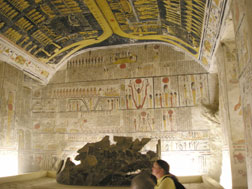 These last four sites contain the tombs of Tutankhamun, Nefertiti (which we didn’t visit) and some of the most vivid tomb paintings we had seen. Even after several thousand years the colors are bright and coat every available inch from walls to ceiling with images of war, mummification, offerings to the gods, and scenes of everyday life (like making wine and bread, harvest, building, and hunting). Mohamad patiently explained the scenes and interpreted the hieroglyphics so that we could understand the ancient Egyptian culture for both the mighty and the lowly.
These last four sites contain the tombs of Tutankhamun, Nefertiti (which we didn’t visit) and some of the most vivid tomb paintings we had seen. Even after several thousand years the colors are bright and coat every available inch from walls to ceiling with images of war, mummification, offerings to the gods, and scenes of everyday life (like making wine and bread, harvest, building, and hunting). Mohamad patiently explained the scenes and interpreted the hieroglyphics so that we could understand the ancient Egyptian culture for both the mighty and the lowly.
Although some of the tombs and temples become blurred in our memory, the temples of Luxor and Karnak remain vivid. As you walked past the carved walls, statues, and obelisks, you entered areas that had increasingly restricted access in ancient times.
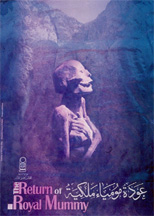 It started with the place for the general public in the outer avenue of sphinxes, through the large columned halls (called hypostyle halls) of the priests and high priests, to the inner sanctuary where only the Pharaoh could enter. A nighttime sound and light show at Karnak emphasized the importance of everyone in their place.
It started with the place for the general public in the outer avenue of sphinxes, through the large columned halls (called hypostyle halls) of the priests and high priests, to the inner sanctuary where only the Pharaoh could enter. A nighttime sound and light show at Karnak emphasized the importance of everyone in their place.
Another highlight was a visit to the new wing of the Luxor Museum, one of the most beautifully displayed collection of antiquities we have ever seen. The lighting and arrangement allowed you to see statues from all sides. There were also tools of the tomb painters, small wooden boat models, and the recently acquired mummy of Ramses I (brought back from Atlanta, Georgia – billed as the “Return of the Mummy”).
CULTURAL NOTE (Transportation): During our trip we experienced a wide variety of modes of transportation. Usually it was a van.
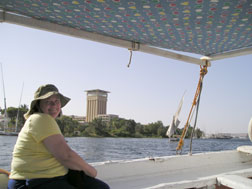 We also took a train, plane, cruise ship, small hand built native sailboat (called a felucca) to cross the Nile, small motorboat as a ferry, horse drawn carriage to travel about town, and camel. The felucca was, at least for Di, a relaxing experience as the wind caught the sail and we tacked across the water. It is used, like the motorboat, as a water taxi.
We also took a train, plane, cruise ship, small hand built native sailboat (called a felucca) to cross the Nile, small motorboat as a ferry, horse drawn carriage to travel about town, and camel. The felucca was, at least for Di, a relaxing experience as the wind caught the sail and we tacked across the water. It is used, like the motorboat, as a water taxi.
At the opposite end of the comfort scale was the camel. You crawl onto the saddle, consisting of extremely uncomfortable wooden posts in front and behind you with multiple blankets below you. The camel is on its knees. It then rises front first, then back as you hold on for dear life, until it reaches its full height, higher than you really want to be. Since camels walk the opposite of horses (that is they move both right side legs then both left side legs) and you likely have no stirrups, travel is a constant swaying from side to side trying to stay on. The camels will groan, snort, stop suddenly to eat (or for no apparent reason), and randomly release gas from both ends, all the while (I think) secretly smiling at us foolish tourists.
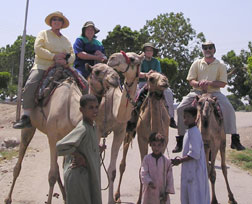 They know what is to come – getting off the creature. Front end goes down first throwing you off over their head if you don’t have someone there to help. Then rear end. You gratefully slide off and willing pay the camel guide. You have survived and that is worth every piastre.
They know what is to come – getting off the creature. Front end goes down first throwing you off over their head if you don’t have someone there to help. Then rear end. You gratefully slide off and willing pay the camel guide. You have survived and that is worth every piastre.
Speaking of survival, we are not sure that is the motivation behind the drivers in Egypt, especially in the cities like Luxor and Cairo. This is a land of few streetlights, ignored lane markers, and survival of the fastest. As a fellow tourist said, “there are no traffic laws here, merely suggestions”. To drive across town you essentially forge full speed ahead, usually straddling the white lane marker looking for an inch or two of opening between vehicles and any hesitancy on the part of the other drivers. This includes whether you are going straight, turning right or left, or making a U-turn. Cars, vans and taxis are in direct competition (and sometimes contact) with the trucks, busses, motorcycles, bicycles, pedestrians, and donkey carts also in the road. They are warned of your oncoming vehicle and impending disaster by honking the horn. In fact, the drivers have one hand on the steering wheel and one on the horn. You are so close to the vehicle next to you, even at high speeds, that they can easily see the fear of death in our eyes. All this without seat belts. At the end of the day, you gladly tip the driver for his skill, cunning and ability to bring you home alive.
PHASE 3 - THE RED SEA AND SINAI PENINSULA: A four hour trip via van across mostly desert took us to Hurghada, the first of the Red Sea resorts we were to visit. We had left Mohamad back at Luxor and were essentially on our own. Hurghada is a town that exists to serve tourists who visit the resorts.
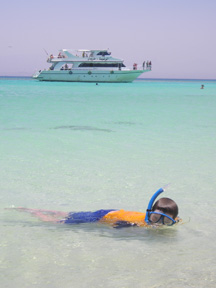 Like the resorts in Mexico and the Caribbean, many of the hotels are set up so that you need not leave for meals and/or entertainment unless you wish. We swam in the Red Sea, ate dinner in the town (a few miles by taxi), and Tim, Vilene and Matt took a snorkel/boat trip to nearby Grifton Island. Di was laid up with what could politely be called Pharaoh’s revenge – an affliction we all suffered on and off (mostly on) throughout the trip, despite drinking only bottled water and eating only what could be peeled, boiled, or cooked.
Like the resorts in Mexico and the Caribbean, many of the hotels are set up so that you need not leave for meals and/or entertainment unless you wish. We swam in the Red Sea, ate dinner in the town (a few miles by taxi), and Tim, Vilene and Matt took a snorkel/boat trip to nearby Grifton Island. Di was laid up with what could politely be called Pharaoh’s revenge – an affliction we all suffered on and off (mostly on) throughout the trip, despite drinking only bottled water and eating only what could be peeled, boiled, or cooked.
The hotel food was excellent and the clientele a curious mixture of wealthy Arabs (as could be surmised by the arrival of their yachts), Russian and Germans on package tours, some British, and a few Americans. The mixture was reflected especially at the breakfast buffet where food reflected all cultures. One sight I will not forget is the very scantily clad Russian girl standing next to the Arab woman wearing a full hijab (head covering with only a slit for the eyes). One can only wonder what they thought of each other.
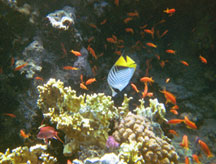
After a few days in Hurghada, we took a short ferry ride across the Gulf of Suez to the resort town of Sharm el-Sheik (called Sharm). This town had a cleaner, more modern feel and had once been owned by the Israelis. It catered to Arabs and mostly Italian tourists. Although there was a sand beach, you could enter the water only by way of a floating dock, which took you over the rocks and past the drop off. As you entered the water here, the view below took your breath away. There were some of the most colorful and pristine coral reefs we had ever snorkeled.
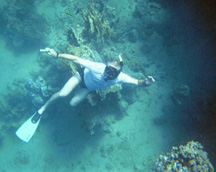 Turtles, rays, jellyfish, and endless varieties of fish were found within a very short distance. The pictures we took with the underwater cameras could not do it justice. A jeep safari to the Ras Mohammed National Marine Park allowed us to see even more fantastic underwater gardens.
Turtles, rays, jellyfish, and endless varieties of fish were found within a very short distance. The pictures we took with the underwater cameras could not do it justice. A jeep safari to the Ras Mohammed National Marine Park allowed us to see even more fantastic underwater gardens.
Despite the great snorkeling and food, I could feel a sense of isolation within these two resorts. You must make an effort to see the actual town and its apparent level of poverty is a stark contrast to the five star facilities in which you can hide. While walking through both towns we were constantly bombarded by shopkeepers and street vendors to buy souvenirs. Prices for staples like water, taxi rides, and restaurant meals were different for locals versus tourists. For some of us, the situation was uncomfortable.
At this time, Egyptian President Mubarak was in Europe for medical treatment (leaving no real second in command) and Israel was accusing Egypt of allowing Palestinians to bring arms in from Egypt through tunnels.
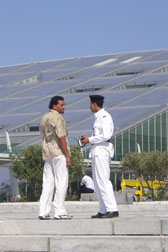 So, when we went to leave Sharm for Mount Sinai, within the peninsula, we were detained for eight hours until we could get the proper signed permission and a police escort. Fortunately, Mohamad had rejoined us and did a spectacular job of running interference at the various bureaucratic offices we had to visit first. At various times through the trip, we were given additional security since we were Americans and the Egyptians wanted no harm to come to us. This feeling of being under surveillance was also reflected by the frequent stops our van made at military checkpoints. It was never really scary, but certainly something we were not used to.
So, when we went to leave Sharm for Mount Sinai, within the peninsula, we were detained for eight hours until we could get the proper signed permission and a police escort. Fortunately, Mohamad had rejoined us and did a spectacular job of running interference at the various bureaucratic offices we had to visit first. At various times through the trip, we were given additional security since we were Americans and the Egyptians wanted no harm to come to us. This feeling of being under surveillance was also reflected by the frequent stops our van made at military checkpoints. It was never really scary, but certainly something we were not used to.
After the long delay and a several hour trip into the desert mountains, we arrived at St. Katherine’s, site of a monastery and Mt. Sinai (Mount of Moses), reputed site where God gave Moses the Ten Commandments. After a too short rest, we awoke at 2 a.m., had a cup of tea, and started to climb Mt. Sinai. It is the tallest peak in the Sinai (7,500 feet) and the “easy” route consists of a two to three hour uphill walk (to put it lightly) up a switchback followed by over 700 stairs of various heights. Mohamad and Tim made it all the way up on foot. Vilene, Matt, and Di resorted to a camel ride partway (Di must have been desperate to get on a camel again!). However, the camel was too smart to take the 700 steps. But we did make it to the top in time to see the sun rise over the mountains – unforgettable. A short stop on top to take a few photos and then the downhill (no camels) to breakfast. Thank goodness for Advil!

We visited the monastery, established in the sixth century and populated almost exclusively by Greek Coptic (Christian) monks. The community is fairly self sustaining with extensive gardens, a chapel filled with icons, a room filled with the bones of the dead monks, and (supposedly) the original burning bush of Moses (which is found nowhere else in the world and has resisted attempts for grow it elsewhere). We (and security) then headed back across the desert to Cairo via the Suez Canal.
CULTURAL NOTE (Buying and Selling): For the most part, Egypt has a culture where the fixed price item is rarely found outside of a hotel or restaurant. Most cities and towns have at least one bazaar, where all types of goods, food, and souvenirs can be found.
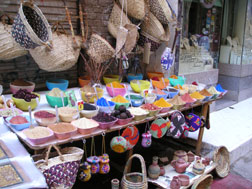 The bazaar consists of very small stalls, most with backrooms that sell specific items. For example, there were shops for just scarves, just spices, just t-shirts, just hookahs for smoking (called hubbly-bubblies), just perfume, etc. Many of the shops sold identical goods (including the plastic pyramids and mummies). So it was a matter of finding what you wanted and bargaining for it. The technique is to ask the price, offer less than half, resist the complaints of the shopkeeper and be prepared to walk away until you get the price you want. Obviously, the shopkeeper will not sell at a loss. Only Tim found this process appealing and he enabled us to get some good deals (we thought) on a rug, an alabaster bowl, a papyrus, and various other items. Vilene and Di would have gladly just paid the quoted price and left – we found no joy in bargaining. But the bustle of the bazaar, the smells of the food and spices, the people walking the streets with huge trays of fresh rolls balanced on their heads and the roving mint tea vendors made for some fascinating people watching.
The bazaar consists of very small stalls, most with backrooms that sell specific items. For example, there were shops for just scarves, just spices, just t-shirts, just hookahs for smoking (called hubbly-bubblies), just perfume, etc. Many of the shops sold identical goods (including the plastic pyramids and mummies). So it was a matter of finding what you wanted and bargaining for it. The technique is to ask the price, offer less than half, resist the complaints of the shopkeeper and be prepared to walk away until you get the price you want. Obviously, the shopkeeper will not sell at a loss. Only Tim found this process appealing and he enabled us to get some good deals (we thought) on a rug, an alabaster bowl, a papyrus, and various other items. Vilene and Di would have gladly just paid the quoted price and left – we found no joy in bargaining. But the bustle of the bazaar, the smells of the food and spices, the people walking the streets with huge trays of fresh rolls balanced on their heads and the roving mint tea vendors made for some fascinating people watching.
PHASE 4 – CAIRO REVISTED: The last few days of the trip were spent in Cairo, in a hotel on an island in the middle of the Nile. A side trip to Greek ruins in Alexandria the port city, visits to the fortress Citadel of Saladin, Old Cairo with its Coptic churches and Islamic Cairo with the Mosques, and a visit to the famous Khan el-Khalili bazaar filled some of the remaining time.
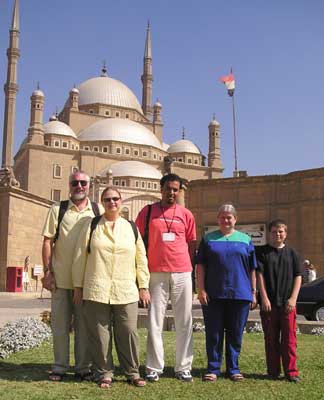 We spent two afternoons at the Egyptian Museum of Antiquities (known as the Cairo Museum). This large building was stuffed with all sorts of things from the treasures of King Tut’s tomb, to statues and mummies, jewelry, tomb paintings, cloth, and sandals thousands of years old. There was so much to see and we could only touch on the most important. As usual, Mohamad did a fine job connecting the sites and stories we had seen during the trip with the museum displays.
We spent two afternoons at the Egyptian Museum of Antiquities (known as the Cairo Museum). This large building was stuffed with all sorts of things from the treasures of King Tut’s tomb, to statues and mummies, jewelry, tomb paintings, cloth, and sandals thousands of years old. There was so much to see and we could only touch on the most important. As usual, Mohamad did a fine job connecting the sites and stories we had seen during the trip with the museum displays.
Friday was our last evening together in Cairo, as Vilene and Matt were staying another three days. Mohamad invited us to the home of his sister, Mona, for dinner that night. After a subway and taxi ride, we arrived in an area of the city known for its overpopulation and 24-hour street life. Down a dark street and up several flights of stairs, we arrived at the apartment. There we were greeted by Mona, in full hijab, and Mohamad’s brother Yosef. We sat on the floor and ate a wonderful meal of chicken, mixed vegetable salad, hot roasted potatoes and eggplant, and a surprisingly good okra dip for the pita bread. Although the apartment was not large, it was inviting and comfortable. After dinner we talked (with the help of Mohamad’s translating) about the differences in Islam and Christianity, how Mona felt about wearing traditional dress, and raising children in a society increasingly influenced by Western culture. We were fortunate to have this opportunity to see beyond the tourist sites. Mona was very gracious and generous in sharing her home and meal with us. It is these experiences that make us realize how similar we all are in values despite differences in religion, dress, and culture.
This was a spectacular trip. We are most grateful to Mohamad for his guidance in many ways. Vilene and Matt were easy and great to travel with, and we appreciate the chance to share Egypt with them. Thanks to you three.
Until we see you again, inshallah (God willing). Maa al-salaama (Good bye).
-- Tim and Di
 As many of you know, we joined with our friend Vilene and her 12-year old son Matt to take a three-week tour of Egypt. This was the first trip to Egypt for Tim, Diane, and Matt (Vilene had been before). It was also Tim’s and Di’s first real guided pre-packaged trip. Here are the high (and low) lights.
As many of you know, we joined with our friend Vilene and her 12-year old son Matt to take a three-week tour of Egypt. This was the first trip to Egypt for Tim, Diane, and Matt (Vilene had been before). It was also Tim’s and Di’s first real guided pre-packaged trip. Here are the high (and low) lights.

 After many trips where we did this stuff ourselves, it was an unexpected pleasure not to have to deal with the bureaucracy, especially when we could not read the Arabic-language signs. And since one of the guys handed Di a dozen roses in welcome, she would have followed them anywhere. However, as we were soon to find out, help has its costs…but more on that later.
After many trips where we did this stuff ourselves, it was an unexpected pleasure not to have to deal with the bureaucracy, especially when we could not read the Arabic-language signs. And since one of the guys handed Di a dozen roses in welcome, she would have followed them anywhere. However, as we were soon to find out, help has its costs…but more on that later.
 We were prepared for the incredibly hot, dry, dusty and crowded grand tour of the Great Pyramids (see attached image), as we had read in the travel guides.
We were prepared for the incredibly hot, dry, dusty and crowded grand tour of the Great Pyramids (see attached image), as we had read in the travel guides.
 It was obvious that the pyramid was built around it, as it was too large to fit though the chamber door. This was only the first example of the skill of the Pharonic engineers.
It was obvious that the pyramid was built around it, as it was too large to fit though the chamber door. This was only the first example of the skill of the Pharonic engineers.




 However, since the water level could not be controlled, very high or low flood levels could mean starvation. As early as 2900 B.C., dams were attempted in this area. The latest attempt, built in the 1960’s in an Egyptian-Russian project, allowed the Nile to not only be monitored but also used for electrical power. One disadvantage is that the silt was no longer deposited on the fields, so farmers have to depend on fertilizers, which run off to cause polluted waters and gradual filling in of the Nile Delta on the Mediterranean. (We see a similar problem with the Mississippi River). Another problem is that many monuments and villages were submerged by the huge Lake Nasser formed upstream of the dam. Progress has its costs.
However, since the water level could not be controlled, very high or low flood levels could mean starvation. As early as 2900 B.C., dams were attempted in this area. The latest attempt, built in the 1960’s in an Egyptian-Russian project, allowed the Nile to not only be monitored but also used for electrical power. One disadvantage is that the silt was no longer deposited on the fields, so farmers have to depend on fertilizers, which run off to cause polluted waters and gradual filling in of the Nile Delta on the Mediterranean. (We see a similar problem with the Mississippi River). Another problem is that many monuments and villages were submerged by the huge Lake Nasser formed upstream of the dam. Progress has its costs.
 It is a huge temple built into a mountainside with large statues of Ramses II at the front. To save this temple, it was cut into over 2,000 blocks, each weighing 22 tons, and reassembled about 650 feet inland. Not only is the sectioning virtually impossible to see, a “mountain” was build around it to simulate original surroundings. This technique of cutting, moving, and recreating the environment was done for several monuments, including the large temple complex at Philae, which we later visited. Modern engineering at its finest.
It is a huge temple built into a mountainside with large statues of Ramses II at the front. To save this temple, it was cut into over 2,000 blocks, each weighing 22 tons, and reassembled about 650 feet inland. Not only is the sectioning virtually impossible to see, a “mountain” was build around it to simulate original surroundings. This technique of cutting, moving, and recreating the environment was done for several monuments, including the large temple complex at Philae, which we later visited. Modern engineering at its finest.
 These last four sites contain the tombs of Tutankhamun, Nefertiti (which we didn’t visit) and some of the most vivid tomb paintings we had seen. Even after several thousand years the colors are bright and coat every available inch from walls to ceiling with images of war, mummification, offerings to the gods, and scenes of everyday life (like making wine and bread, harvest, building, and hunting). Mohamad patiently explained the scenes and interpreted the hieroglyphics so that we could understand the ancient Egyptian culture for both the mighty and the lowly.
These last four sites contain the tombs of Tutankhamun, Nefertiti (which we didn’t visit) and some of the most vivid tomb paintings we had seen. Even after several thousand years the colors are bright and coat every available inch from walls to ceiling with images of war, mummification, offerings to the gods, and scenes of everyday life (like making wine and bread, harvest, building, and hunting). Mohamad patiently explained the scenes and interpreted the hieroglyphics so that we could understand the ancient Egyptian culture for both the mighty and the lowly.
 It started with the place for the general public in the outer avenue of sphinxes, through the large columned halls (called hypostyle halls) of the priests and high priests, to the inner sanctuary where only the Pharaoh could enter. A nighttime sound and light show at Karnak emphasized the importance of everyone in their place.
It started with the place for the general public in the outer avenue of sphinxes, through the large columned halls (called hypostyle halls) of the priests and high priests, to the inner sanctuary where only the Pharaoh could enter. A nighttime sound and light show at Karnak emphasized the importance of everyone in their place.
 We also took a train, plane, cruise ship, small hand built native sailboat (called a felucca) to cross the Nile, small motorboat as a ferry, horse drawn carriage to travel about town, and camel. The felucca was, at least for Di, a relaxing experience as the wind caught the sail and we tacked across the water. It is used, like the motorboat, as a water taxi.
We also took a train, plane, cruise ship, small hand built native sailboat (called a felucca) to cross the Nile, small motorboat as a ferry, horse drawn carriage to travel about town, and camel. The felucca was, at least for Di, a relaxing experience as the wind caught the sail and we tacked across the water. It is used, like the motorboat, as a water taxi.
 They know what is to come – getting off the creature. Front end goes down first throwing you off over their head if you don’t have someone there to help. Then rear end. You gratefully slide off and willing pay the camel guide. You have survived and that is worth every piastre.
They know what is to come – getting off the creature. Front end goes down first throwing you off over their head if you don’t have someone there to help. Then rear end. You gratefully slide off and willing pay the camel guide. You have survived and that is worth every piastre.
 Like the resorts in Mexico and the Caribbean, many of the hotels are set up so that you need not leave for meals and/or entertainment unless you wish. We swam in the Red Sea, ate dinner in the town (a few miles by taxi), and Tim, Vilene and Matt took a snorkel/boat trip to nearby Grifton Island. Di was laid up with what could politely be called Pharaoh’s revenge – an affliction we all suffered on and off (mostly on) throughout the trip, despite drinking only bottled water and eating only what could be peeled, boiled, or cooked.
Like the resorts in Mexico and the Caribbean, many of the hotels are set up so that you need not leave for meals and/or entertainment unless you wish. We swam in the Red Sea, ate dinner in the town (a few miles by taxi), and Tim, Vilene and Matt took a snorkel/boat trip to nearby Grifton Island. Di was laid up with what could politely be called Pharaoh’s revenge – an affliction we all suffered on and off (mostly on) throughout the trip, despite drinking only bottled water and eating only what could be peeled, boiled, or cooked.

 Turtles, rays, jellyfish, and endless varieties of fish were found within a very short distance. The pictures we took with the underwater cameras could not do it justice. A jeep safari to the Ras Mohammed National Marine Park allowed us to see even more fantastic underwater gardens.
Turtles, rays, jellyfish, and endless varieties of fish were found within a very short distance. The pictures we took with the underwater cameras could not do it justice. A jeep safari to the Ras Mohammed National Marine Park allowed us to see even more fantastic underwater gardens.
 So, when we went to leave Sharm for Mount Sinai, within the peninsula, we were detained for eight hours until we could get the proper signed permission and a police escort. Fortunately, Mohamad had rejoined us and did a spectacular job of running interference at the various bureaucratic offices we had to visit first. At various times through the trip, we were given additional security since we were Americans and the Egyptians wanted no harm to come to us. This feeling of being under surveillance was also reflected by the frequent stops our van made at military checkpoints. It was never really scary, but certainly something we were not used to.
So, when we went to leave Sharm for Mount Sinai, within the peninsula, we were detained for eight hours until we could get the proper signed permission and a police escort. Fortunately, Mohamad had rejoined us and did a spectacular job of running interference at the various bureaucratic offices we had to visit first. At various times through the trip, we were given additional security since we were Americans and the Egyptians wanted no harm to come to us. This feeling of being under surveillance was also reflected by the frequent stops our van made at military checkpoints. It was never really scary, but certainly something we were not used to.

 The bazaar consists of very small stalls, most with backrooms that sell specific items. For example, there were shops for just scarves, just spices, just t-shirts, just hookahs for smoking (called hubbly-bubblies), just perfume, etc. Many of the shops sold identical goods (including the plastic pyramids and mummies). So it was a matter of finding what you wanted and bargaining for it. The technique is to ask the price, offer less than half, resist the complaints of the shopkeeper and be prepared to walk away until you get the price you want. Obviously, the shopkeeper will not sell at a loss. Only Tim found this process appealing and he enabled us to get some good deals (we thought) on a rug, an alabaster bowl, a papyrus, and various other items. Vilene and Di would have gladly just paid the quoted price and left – we found no joy in bargaining. But the bustle of the bazaar, the smells of the food and spices, the people walking the streets with huge trays of fresh rolls balanced on their heads and the roving mint tea vendors made for some fascinating people watching.
The bazaar consists of very small stalls, most with backrooms that sell specific items. For example, there were shops for just scarves, just spices, just t-shirts, just hookahs for smoking (called hubbly-bubblies), just perfume, etc. Many of the shops sold identical goods (including the plastic pyramids and mummies). So it was a matter of finding what you wanted and bargaining for it. The technique is to ask the price, offer less than half, resist the complaints of the shopkeeper and be prepared to walk away until you get the price you want. Obviously, the shopkeeper will not sell at a loss. Only Tim found this process appealing and he enabled us to get some good deals (we thought) on a rug, an alabaster bowl, a papyrus, and various other items. Vilene and Di would have gladly just paid the quoted price and left – we found no joy in bargaining. But the bustle of the bazaar, the smells of the food and spices, the people walking the streets with huge trays of fresh rolls balanced on their heads and the roving mint tea vendors made for some fascinating people watching.
 We spent two afternoons at the Egyptian Museum of Antiquities (known as the Cairo Museum). This large building was stuffed with all sorts of things from the treasures of King Tut’s tomb, to statues and mummies, jewelry, tomb paintings, cloth, and sandals thousands of years old. There was so much to see and we could only touch on the most important. As usual, Mohamad did a fine job connecting the sites and stories we had seen during the trip with the museum displays.
We spent two afternoons at the Egyptian Museum of Antiquities (known as the Cairo Museum). This large building was stuffed with all sorts of things from the treasures of King Tut’s tomb, to statues and mummies, jewelry, tomb paintings, cloth, and sandals thousands of years old. There was so much to see and we could only touch on the most important. As usual, Mohamad did a fine job connecting the sites and stories we had seen during the trip with the museum displays.